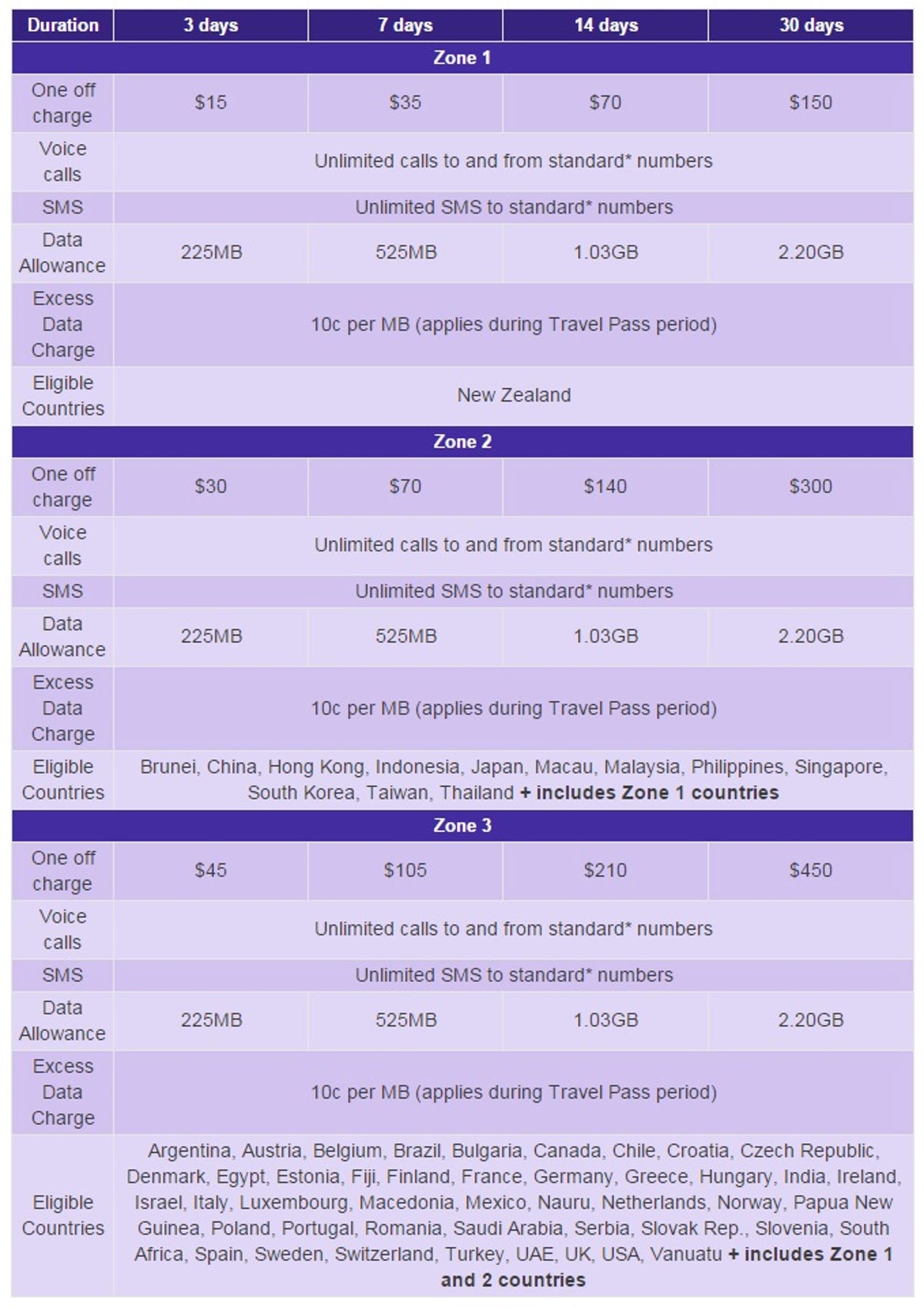Update, July 12, 2017: Telstra has updated its Travel Passes to a pay-per-day pricing structure. Read all about the new pricing here.
Telstra customers travelling to some of the world’s most popular travel destinations are set to pay more for calls and data after Telstra restructured pricing for its International Travel Passes.
While travellers will get increased data allowances, Telstra has changed the way a number of countries are ‘zoned’ under the new pricing model. The result means that customers buying a Travel Pass for the US, UK, Canada and Europe will pay as much as AU$150 more for international coverage.
Introduced in September last year, Telstra’s International Travel Passes allow customers to use data, make calls and send texts overseas. The passes are available for periods of 3 days, 7 days, 14 days or 30 days, and are split into different ‘zones’ based on the countries you visit.
Telstra launched the scheme with two zones covering the most “popular holiday destinations” worldwide, but now the telco has now added a third zone at a higher cost. Now, every country except New Zealand has been bumped up to a higher price tier.
Zone 1 and 2 prices are unchanged, with an extra 50 percent added to data inclusions across the board. But while Zone 1 previously included New Zealand, Thailand and Indonesia (including Bali), these passes are now only good for travel to New Zealand. The remaining countries now require Zone 2 passes which are twice the price for 50 percent more data.
In a further sting for travellers, a number of popular countries have been removed from the Zone 2 list, and bumped up to the top tier Zone 3 Travel Pass.
The new Zone 3 passes cost from AU$45 for 3 days up to AU$450 for 30 days — a 50 percent price hike that equates to $150 at the top end.
Excess data charges were also increased from 3 cents per MB to 10 cents per MB, but this decision was later reversed by Telstra CEO Andy Penn.


The new pricing structure for Telstra’s International Travel Passes.
Screenshot by Claire Reilly/CNET
Telstra customers have already spoken out about the changes, sharing comments in response to the announcement on Telstra’s website.
“Absolutely disgusted with the new prices,” said one user. “Extra data usage has more than tripled in price. The standard quota is already inadequate. Telstra, what are you thinking?”
Another user, AlistairGray, complained about the price hike ahead of an upcoming overseas trip.
“How a 50 percent increase in cost is justified is beyond me in a zero inflation environment,” the customer wrote. “The cost for my needs was already over the top and now not economical at all.”
In a statement provided to CNET regarding the changes, Telstra focused on increased data and the expansion of its Travel Pass scheme to include more countries.
“Telstra has made changes to the International Roaming Travel Passes to expand the number of countries covered and to increase the amount of included data available when roaming,” a Telstra spokesperson said. “We’re increasing the daily Travel Pass data allowance from an average of 50 MB a day to 75 MB a day.
“In addition to the extra data, Telstra has also re-zoned some countries, which means the cost of buying a Pass for these countries has increased.
“As a result of these changes, Travel Passes will be available for 20 new countries, meaning customers can now use a Travel Pass when they visit the vast majority of international destinations Australians visit.”
However, in response to criticism, Telstra CEO Andy Penn issued a statement late on Thursday announcing that he had reversed one of the changes made to roaming.
Penn said the telco would no longer be bumping up excess data charges for roaming to 10 cents per MB, maintaining the original 3 cents per MB price. He noted that the about-face would help make roaming costs more “predictable.”
“Price increases are often necessary and I completely understand why the teams that look after our products made the changes they did,” he said. “But they didn’t sit well with me, customers clearly told us the same so it’s my responsibility to act on behalf of our customers.”
Update, December 4, 2015 at 9.30 a.m. AEDT: Added comments from Telstra CEO Andy Penn.
Update, December 12, 2016 at 10.30 a.m. AEDT: Added detail about changed pricing structure. Read the updated pricing details here.



